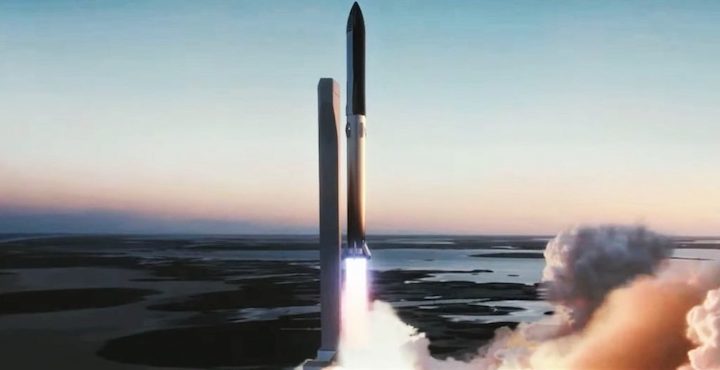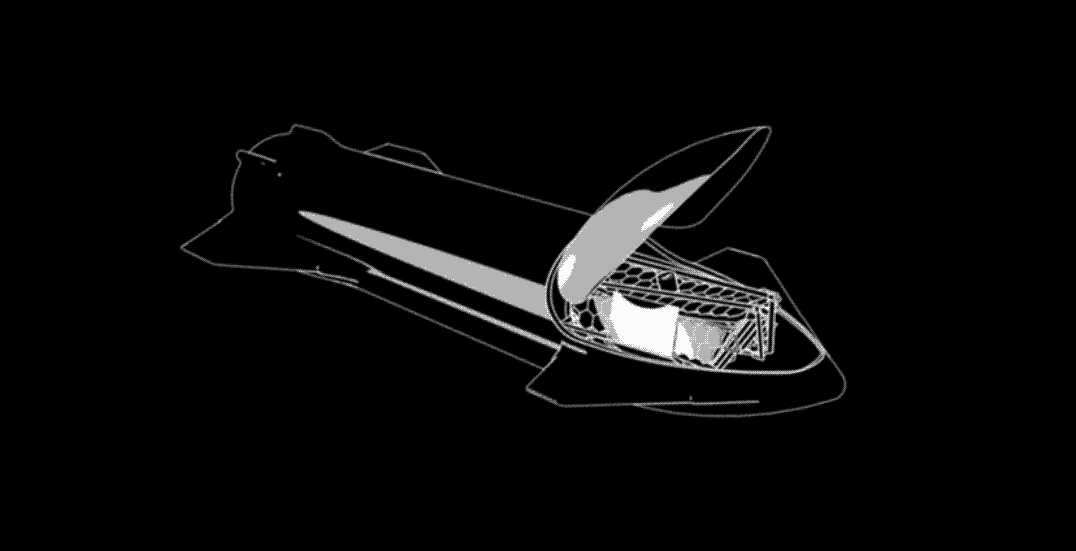29.10.2019

SpaceX President and COO Gwynne Shotwell teased new information detailing the wealth of benefits that the next-generation Starship launch vehicle could bring for the deployment of the company’s Starlink internet satellite constellation.

Speaking at the Baron 2019 Investment Conference on October 25th, the SpaceX executive touched on a broad range of topics according to CNBC reporter Michael Sheetz. Baron did webcast most of the conference’s main events, of which all but Shotwell’s have been archived, but it looks like CNBC may have been the only media outlet given access in an official capacity.
Regardless, based on their reporting on Shotwell’s dialogue with Baron Funds CEO/CIO Ron Baron, the SpaceX executive was unprecedentedly candid and was more than happy to voice direct criticism of competitors like OneWeb, ULA, and Blue Origin.
Beyond Shotwell’s clear confidence that Starlink’s satellite technology is far beyond OneWeb and years ahead of Amazon’s Project Kuiper clone, she also touched on yet another strength: SpaceX’s very own vertically-integrated launch systems. OneWeb plans to launch the vast majority of its Phase 1 constellation on Arianespace’s commercial Soyuz rockets, with the launch contract alone expected to cost more than $1B for ~700 satellites.
SpaceX, on the other hand, owns, builds, and operates its own rocket factory and high-performance orbital launch vehicles and is the only company on Earth to have successfully fielded reusable rockets. In short, although Starlink’s voracious need for launch capacity will undoubtedly require some major direct investments, a large portion of SpaceX’s Starlink launch costs can be perceived as little more than the cost of propellant, work-hours, and recovery fleet operations. Boosters (and hopefully fairings) can be reused ad nauseum and so long as SpaceX sticks to its promise to put customer missions first, the practical opportunity cost of each Starlink launch should be close to zero.
In a perfect scenario, the only material cost of Starlink launches should be the satellites themselves and each expendable Falcon upper stage, which SpaceX has no plans to recover. Speaking prior to Starlink’s 60-satellite “v0.9” launch debut, SpaceX CEO Elon Musk stated that each prototype spacecraft ended up costing more to launch than to build, despite the fact that their first launch flew on a twice-flown Falcon 9 booster.
In fewer words, Musk thus implied that each Starlink satellite likely already costs significantly less than $500,000 even before SpaceX has begun to reap the full benefits of economies of scale. In fact, based on official 2016 figures that estimated the cost of each BFR booster/ship at less than $4M and Musk’s estimate that Starship could cut Starlink launch costs by a factor of 5, the cost of Starlink v0.9 production could have actually been as low as ~$350,000 apiece, with launch costs on the order of ~$20M.
Speaking a little over five months after Musk, Shotwell revealed that a single Starship-Super Heavy launch should be able to place at least 400 Starlink satellites in orbit – a combined payload mass of ~120 metric tons (265,000 lb). Even if the cost of a Starship launch remained identical to Starlink v0.9’s flight-proven Falcon 9, packing almost seven times as many Starlink satellites would singlehandedly cut the relative cost of launch per satellite by more than the 5X figure Musk noted.
In light of this new figure of 400 satellites per individual Starship launch, it’s far easier to understand why SpaceX took the otherwise ludicrous step of reserving space for tens of thousands more Starlink satellites. Even if SpaceX arrives at a worst-case-scenario and is only able to launch Starship-Super Heavy once every 4-8 weeks for the first several years, that could translate to 2400-4800 Starlink satellites placed in orbit every year. Given that 120 tons to LEO is well within Starship’s theoretical capabilities without orbital refueling, it’s entirely possible that Starship could surpass Falcon 9’s Starlink mass-to-orbit almost immediately after it completes its first orbital launch and recovery: a single Starship launch would be equivalent to almost 7 Falcon 9 missions.
Quelle: TESLARATI
